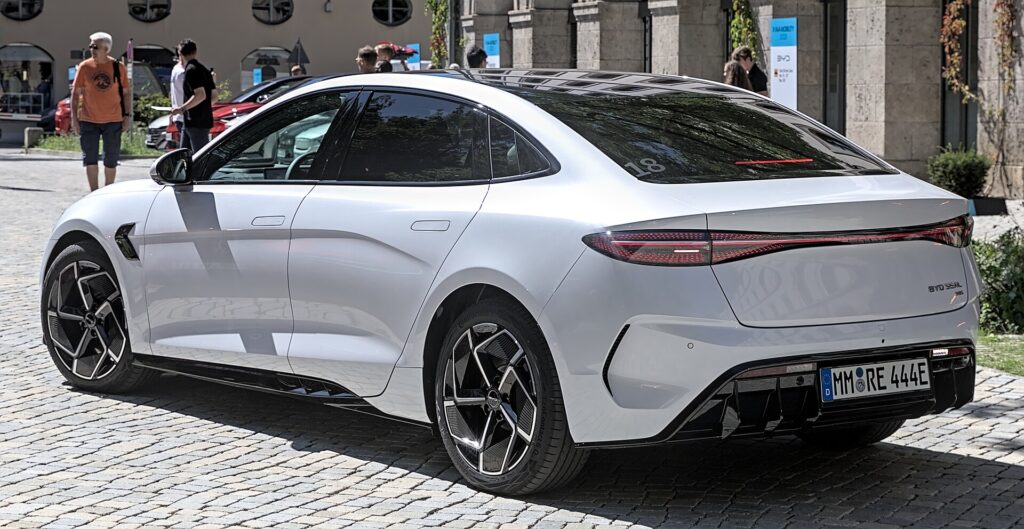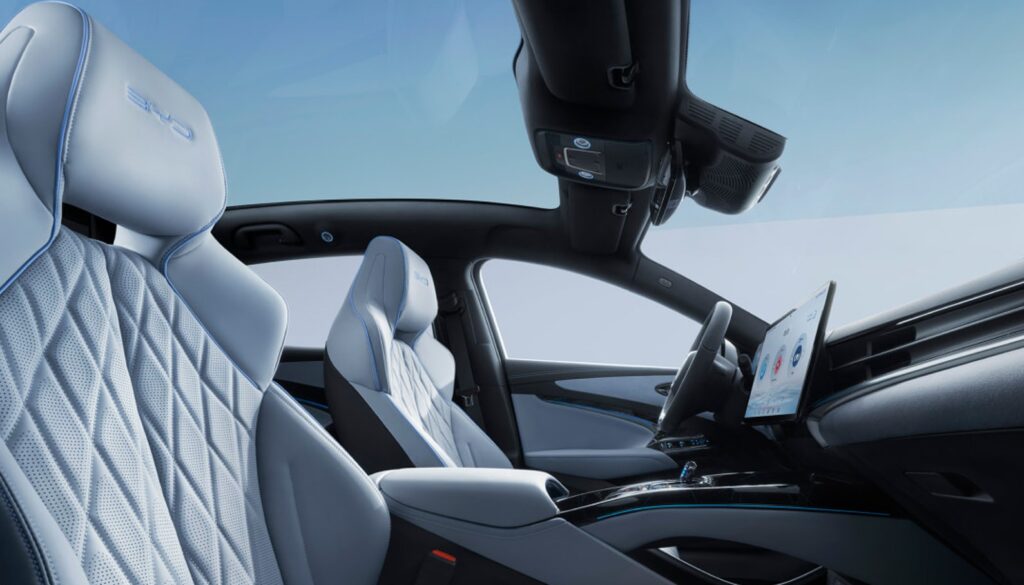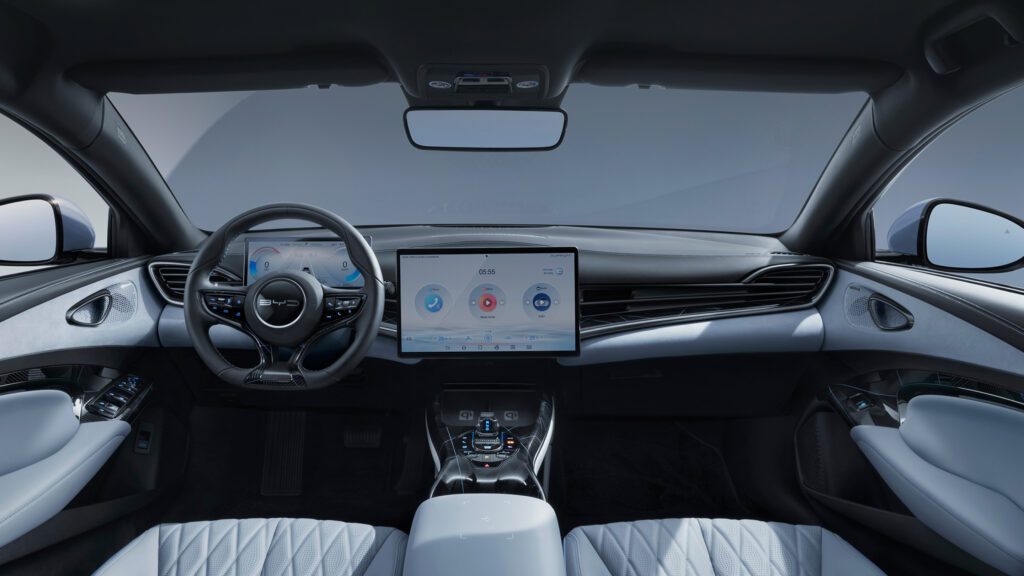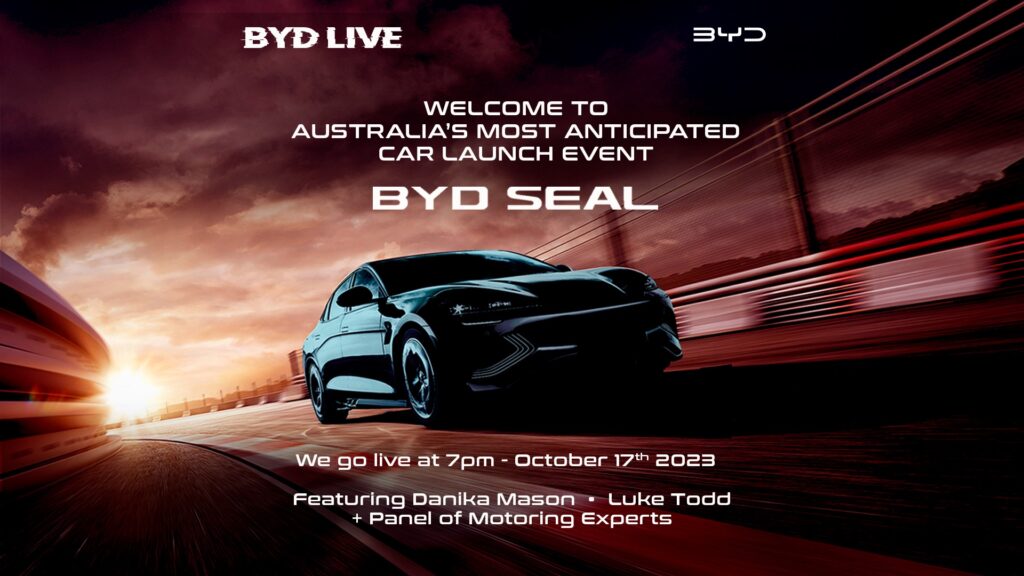BYD has made one of the most successful automotive entries into Australia in history. Its mid-sized SUV the Atto 3 has sold in numbers that legacy auto could only dream of with customers driven towards an EV with a decent range for a decent price.
On the back of the successful Atto 3 launch, BYD recently added the smaller BYD Dolphin to the mix, starting at just A$38,890 (+onroads) it is one of the cheapest new EVs on the market. The China-based BYD has made a clear statement with these two EVs, they will be aggressive on pricing in this market.
Tonight, the third major vehicle from BYD will be launched in Australia.

What’s the Design like?
There’s no debate, the exterior design of the BYD Seal looks fantastic, a sleek, modern sporty sedan that features all the normal tricks to optimise airflow over the vehicle, reduce drag and increase range.
There are flush door handles, sleep mirrors, aero wheel caps, a heat pump to name a few smart design choices but forget EVs, this is just a great-looking car from the front to the rear, there’s lots to love here.
There are lots of premium features like a panoramic glass roof, sports seats, and a familiar 15.6″ touchscreen in the centre of the dash to take the place of most physical buttons.
Perhaps what I like most about the design of the Seal is that it’s for grown-ups, there are no quirky guitar strings in the door like the Atto 3, or weird air vents, this looks like a very comfortable, very professional interior. For those who complain that Tesla doesn’t offer a driver display, BYD does with the Seal, and yes that centre display has the same party trick of rotating to a vertical orientation, although I’m not sure why this is necessary.
It’ll support Apple CarPlay and Android Auto and over-the-air updates, along with voice support for a voice assistant, activated by saying “Hi, BYD”.
We expect the colours offered internationally will also come here, which include Ice blue, Atlantis grey, Polar White and Space Black, with Shadow Green and Indigo Grey an additional cost option. The interior should be available in a standard black, or Tahiti blue.


What is the Performance like?
The BYD Seal (aka Atto 4) is offered in two specs internationally and we expect that to be the case here, with the top-spec “Excellence-AWD’ offering impressive acceleration of just 3.8 seconds to go from 0-100km/hr powered by an AWD drivetrain and a top speed of 180km/hr. There’s no doubt that’s a fast car, particularly for those upgrading from an ICE vehicle.
Tesla recently dropped the Performance spec as part of the recent refresh of Model 3 (currently available to order but not shipping till Jan-Mar 24). The M3P was capable of 3.3s, while the fastest Seal’s best is 0.4s slower at 3.8s. Comparing the best on sale today, the seal is 0.6s faster than the Model 3 Long Range variant at 4.4s.
If you’re looking for the lowest entry price, the ‘Design’ model of the Seal will offer a prompt 5.9-second acceleration time from its RWD platform. This outpaces the Model 3 (SR) at 6.1s.
Both models use a BYD-made 82.5kWh LFP Blade-style battery. By using the LFP chemistry, owners can regularly charge to 100% SOC maximising the available daily range, without significantly impacting the life of the battery.
Charging at home can be done at a max rate of 11kW on AC, or when you’re taking a road trip, DC Fast charging is limited to 150kW, short of the industry’s best of 350kW. There is a decent charging curve with 30%-80% SOC achieved in just 26 minutes, while 10-80% takes 37 minutes.
The vehicle-to-load capability returns with 3kW offered, the Seal will happily power your laptop, coffee maker, portable air conditioner, TV and more.


How much will the BYD Seal cost?
With Tesla’s Model 3 topping the charts of EV sedans in Australia by some margin, there will be a lot of eyes on the price tag when it’s announced tonight. If BYD can undercut Tesla by $5-$10k, there’ll be a queue a mile long for pre-orders. If they land at the same price as the Model 3, I think it’s an obvious choice, the technology of the Model 3, combined with a better charging network make it the easy choice.
By comparison, BYD’s Atto 3 starts at $48,011 (before ORC), however, sedans typically cost less than SUVs, so it’s really difficult to say how aggressive BYD will be with the price of the Seal in Australia.
Internationally the BYD Seal is sold for US$39,000 which right now (thanks to the average exchange rate of $0.63) converts to A$61,682. If we add GST of 10%, we land at $67,850 (before ORC).
Personally, my guess on pricing is that BYD will take a hit to margins in an effort to ensure this launch is as successful, if not more successful than the Atto 3. This means the price is likely to undercut Tesla and if we follow the logic that they’ll want the price to start with a 5, we may see A$59,900 (before ORC).
When is the launch?
BYD Australia will kick off the BYD SEAL launch on October 17th at 7PM and live stream it across their social channels. If you’re keen, make sure you tune in to see the local details confirmed.


Previously I had said that if the Model 3 wasn’t available I’d buy a Polestar 2, with the launch of the Seal, I may need to reconsider that.
